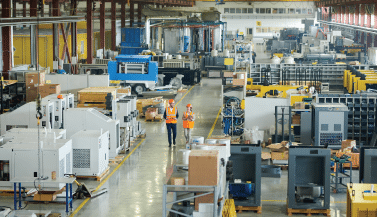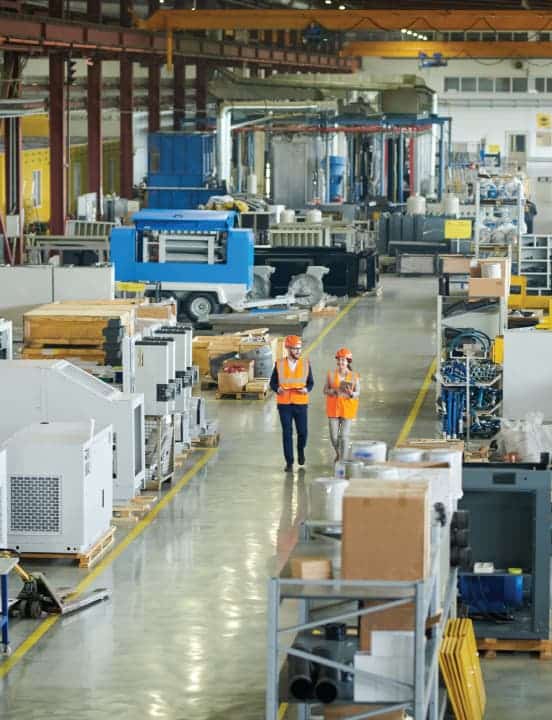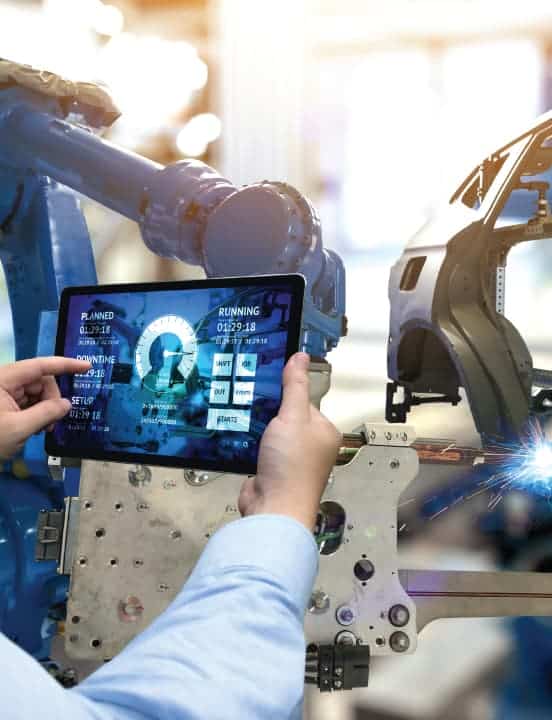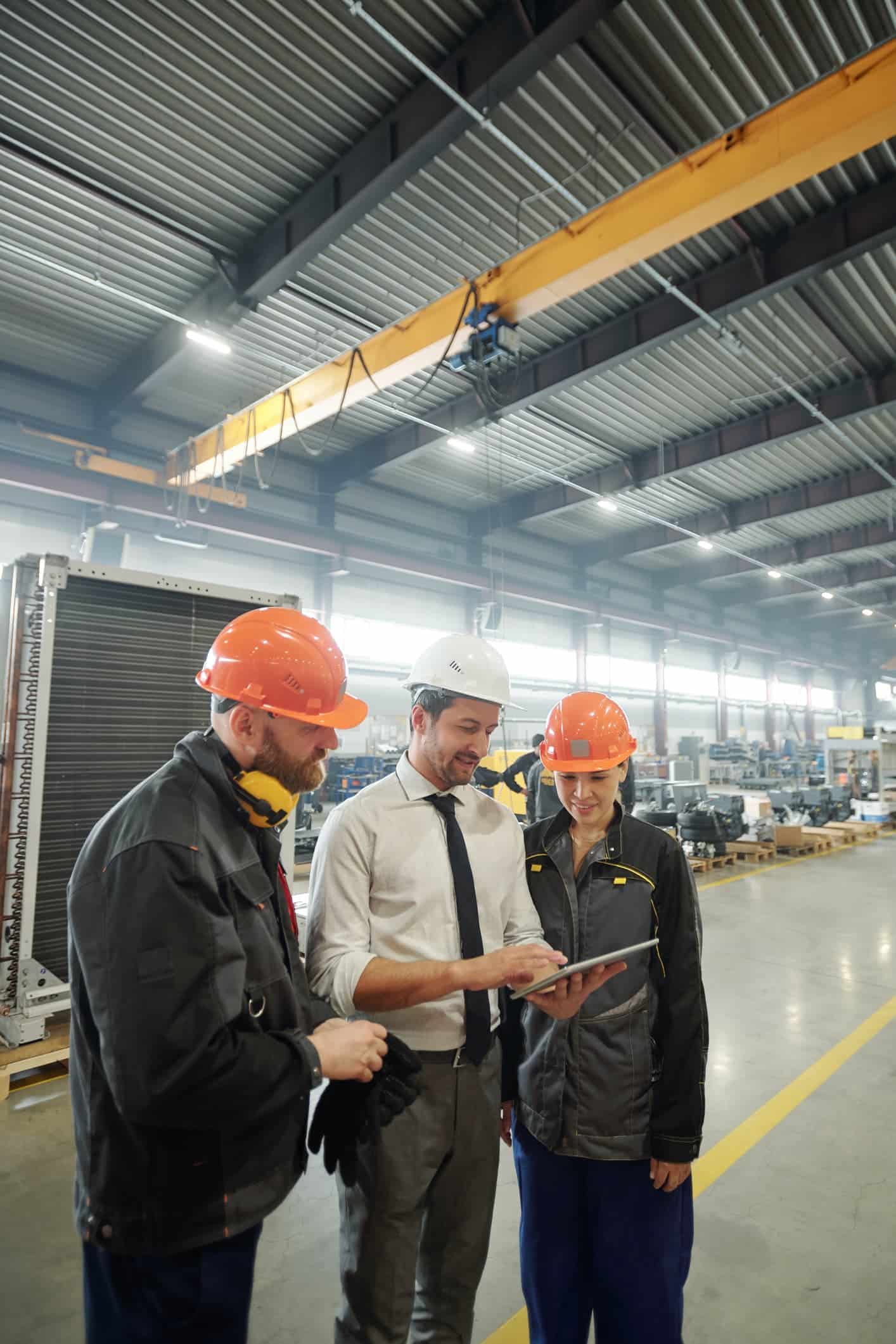- Cloud
- Data Centers
- Managed Services
- Professional Services
- Security
- Partners
- Resources
- About Us
Menu
To remain competitive in an always-on industry, manufacturers need around-the-clock access to data and advanced IT solutions that securely connect, automate and operate anywhere at scale. But with great challenge comes even greater opportunity.
At OneNeck, our extensive experience as an IT solutions partner for manufacturers enables us to provide right-fit solutions that focus on developing and maintaining advanced digital operations while ensuring the utilization of a resilient supply chain. We offer services that allow your workforce to take advantage of innovative tools that provide real-time problem-solving and intuitive collaboration, while protecting your critical data from attack.

Reliable Operations
Reduce unplanned downtime and optimize supply chain through securely connecting machines, sensors, scanners and video.

Hybrid Work
Adapt your environment to meet new hybrid workforce demands by enhancing plant floor collaboration and accommodating a digital workforce.

Cyber Security for the Manufacturing Industry
Protect business, customer, and supplier data and avoid downtime with robust industrial security and safety with threat detection and response.

Reliable Operations
Manufacturers’ production environments are evolving fast, and their networks are not ready for the explosion of data or advancing cyberthreats. Rather than letting these challenges disrupt business, organizations must tackle them head-on by leading with technology and digitizing their business, freeing data securely to support the operational agility required. In order to survive and thrive, manufacturers must embrace Industry 4.0 principles of connectivity and smart automation, and enhance their networks to leverage data to boost productivity, improve product quality, and drive growth.
At OneNeck, we know that industrial digitization requires more network bandwidth, rich data, cybersecurity, simplified scale and edge computing capabilities. We can help you connect, secure, and manage your factory network to safeguard what matters most.

Hybrid Work
Like any other industry, communication is at the core of manufacturing success. Yet, manufacturers often cite team collaboration solutions, device management and security as on-going challenges.
At OneNeck, we can help you enable your workforce to maximize their potential with innovative tools allowing for faster production and seamless collaboration. Our modern workplace experts can design and implement solutions for video conferencing, messaging and file sharing, with security solutions to protect users, devices, data, email and more.

Cyber Security for the Manufacturing Industry
As manufacturers implement digitalization with robotics, automation, machinery, IoT and smart devices, it is critical to secure all connected devices and users from the constant threat of online risks including malware and ransomware threats.
We recognize the importance of data security and are committed to providing customers with security services that adhere to the most stringent compliance regulations. Our security experts design, implement and manage secure and effective IT solutions, permitting increased productivity by applying collaborative technologies while maintaining comprehensive safety standards.

Managed Services
We offer a unique combination of technical expertise and manufacturing industry understanding. We draw upon this experience to provide you with a consultative approach to our managed hosting solutions.
- Managed Services– Manufactures need experience and practical know-how to maximize the benefits of their IT infrastructures. Whether utilizing our managed solutions for a single application or your entire environment of network, servers, databases and applications, OneNeck-managed IT services allow you to spend less time and resources on day-to-day IT tasks.
- Cloud Storage and Hosting– Modern manufacturing means being efficient, fast and responsive. The cloud offers agility, speed and insight necessary to respond quickly to market demands. Whether a private, public or hybrid cloud environment, our experts design solutions that work for your organization.

Proven Experience in Manufacturing IT Solutions
Trek Bicycle Corporation– Looking for a colocation services provider, Trek entered a rigorous selection process in its search for an IT partner. OneNeck was selected for its geographic diversity in seven states, where it owns and operates advanced data centers managed by experienced industry experts and for the breadth of hybrid solutions offered, ranging from cloud services to security.
SPAL USA– As their existing hardware-based backup solution faced an upgrade/refresh, SPAL looked for a more flexible, cost-effective and secure method to ensure backups were created and viable. The OneNeck solution consisted of a cloud-based backup and recovery service powered by Azure backup and a local repository for their diverse workloads.
Lattice Semiconductor– Lattice needed to implement a companywide ERP system. OneNeck analyzed several options with the Lattice team, ultimately determining a virtual Dynamics AX environment would meet the company’s requirements without requiring in-house expertise.
Get In Touch
Call Us
For general inquiries, call: 855.ONENECK
Immediate Assistance
Managed services support: 800.272.3077
Non-managed service support: 515.334.5755
Or visit our service desk:
Service Desk Portal
Chat With Us
Hours available: 24/7
Start a Chat
OneNeck Headquarters
525 Junction Road
Madison, WI 53717
View All Locations
Talk to Our Team

